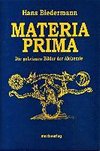
-
 Anglický jazyk
Anglický jazyk
Turkish musical instruments
Autor: Source: Wikipedia
Source: Wikipedia. Pages: 37. Chapters: Tambourine, Kaval, Duduk, Kemenche, Tambur, Çeng, Naqareh, Baglama, Ney, Daf, Davul, Zurna, Gaida, Kanun, Santur, Spoon, Nagara, Arghul, Rud, Tulum, Cümbüs, Zill, Shahrud, Kudüm, Çiftelia, Lavta, Dilli Kaval, Dankiyo,... Viac o knihe
Na objednávku, dodanie 2-4 týždne
14.49 €
bežná cena: 16.10 €
O knihe
Source: Wikipedia. Pages: 37. Chapters: Tambourine, Kaval, Duduk, Kemenche, Tambur, Çeng, Naqareh, Baglama, Ney, Daf, Davul, Zurna, Gaida, Kanun, Santur, Spoon, Nagara, Arghul, Rud, Tulum, Cümbüs, Zill, Shahrud, Kudüm, Çiftelia, Lavta, Dilli Kaval, Dankiyo, Dili tuiduk, Yayli tanbur, Sipsi. Excerpt: The kaval (Turkish pronunciation: ) is a chromatic end-blown flute traditionally played throughout Azerbaijan, Turkey, Hungary, Bulgaria, Macedonia, Albania, Kosovo, southern Serbia (¿¿¿¿¿), northern Greece (¿aß¿¿¿ or t¿aµ¿¿a), Romania (caval), and Armenia (¿¿¿¿¿ or blul). The kaval is primarily associated with mountain shepherds throughout the Balkans and Anatolia. Unlike the transverse flute, the kaval is fully open at both ends, and is played by blowing on the sharpened edge of one end. The kaval has 8 playing holes (7 in front and 1 in the back for the thumb) and usually 4 more near the bottom of the kaval. As a wooden rim-blown flute, Kaval is similar to the Ney of the Arab world. The name "Kaval" may once have been referred to various Balkan duct and rim-blown flutes, accounting for the present day diversity of the term¿s usage. While typically made of wood (cornel cherry, apricot, plum, boxwood, mountain ash, etc.), kavals are also made from Water Buffalo horn, Arundo donax 1753 (Persian Reed), metal and plastic. A kaval made without joints is usually mounted on a wooden holder, which protects it from warping and helps keep the interior walls oiled. According to the key, the kaval can be in the high register (C, C#), middle (D, H) or low (A, B). The kaval plays two octaves and a fifth, in the chromatic scale. Its sound is warm, melancholic and pleasant. A 1919 Kaval. Bone ferrules decorated on the lathe with turned grooves and bird's eye decorations are applied with a preshaped cutting tool.The Bulgarian kaval, once made of a single piece of wood, is now constructed of three separate sections (of cornel, plum or boxwood), with a total length of 60 to 90 cm. Bone rings cover the joints, to prevent the wood from cracking. Metal decoration is also found. The finger-holes are located in the central section, while the lower (shorter) section has four additional holes called dünici or davolski dupki (¿devil¿s holes¿); these are not covered in performance. The kava
- Vydavateľstvo: Books LLC, Reference Series
- Rok vydania: 2017
- Formát: Paperback
- Rozmer: 246 x 189 mm
- Jazyk: Anglický jazyk
- ISBN: 9781155804194






 Nemecký jazyk
Nemecký jazyk 





